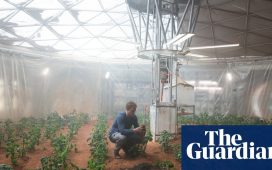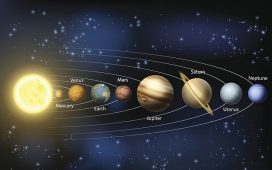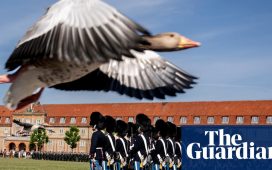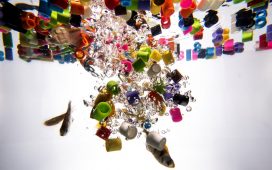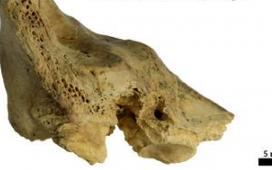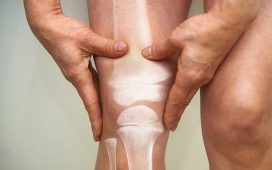A new book about the historic influence of eugenics at the University of Melbourne has shed fresh light on the career of one of Australia’s most decorated scientists, Sir Gustav Nossal.
Ross Jones, who co-edited Dhoombak Goobgoowana: A History of Indigenous Australia and the University of Melbourne, writes in the book that the membership of the Eugenics Society of Victoria, which had deep ties to the university, read like a “who’s who of the academic, judicial, scientific and educational elite of Melbourne”.
The society disbanded in 1961, and Nossal was not a member, but Jones claims he became “perhaps the most notable student” of its ideas in the next generation.
The book does not suggest that Nossal, now 93, supported racist ideas. Eugenics was then a recognised (if controversial) field of scientific inquiry and his supporters say his views were moderate and his speech speculative. But it raises questions about the appropriateness of judging someone by the ethics of their time or ours, and highlights that eugenics has continued – in one way or another – until today.
Nossal left Europe in 1939 as an “amnesty seeker from Hitler’s Austria”. He was the director of the Walter and Eliza Hall Institute of Medical Research (WEHI) from 1965 to 1996 and was named Australian of the Year in 2000 for being a “leading Australian scientist and reconciliation campaigner”.
He has a string of awards and appointments to his name, and recently unveiled a statue of himself at Nossal high school in Melbourne’s outer south-east.
Shortly after Nossal’s appointment at WEHI, Jones writes, he gave several talks on “eugenic population policy”.
In most surviving reports, Nossal is quoted as outlining what might become scientifically possible in future, but without endorsing any specific policy.
Jones writes: “It is striking that even a figure such as Nossal, a refugee from Nazi Germany and later deputy chair of Reconciliation Australia, could find purpose in eugenics in the postwar period.”
The Nossal family did not respond to a request for comment.
The evolution of eugenics after 1945
Eugenics existed before the Nazi horrors of genocide, euthanasia and sterilisation were carried out in the name of “race hygiene”.
And it had a resurgence after the second world war – including at Melbourne University.
There are both nuanced distinctions and underlying similarities between the “hard” eugenics of the Nazis, and the policies that have evolved since 1945, experts say.
Dhoombak Goobgoowana has revealed the extensive influence of Nazi apologists, racists and massacre perpetrators in the history of the university – not referring to Nossal. It outlines how eugenic ideas about white superiority denigrated First Nations people, as well as non-white immigrants.
The university’s vice-chancellor, Prof Duncan Maskell, has said the book is “part of a wider process of truth-telling”.
“We can no longer look away from this difficult history and its legacy, we need to face up to the effect this history has had and continues to have on the Indigenous community,” he said when the book came out.
Warwick Anderson is the Janet Dora Hine professor of politics, governance and ethics and an honorary professor at the university’s school of population and global health.
The eugenics movement in Australia, he says, was mostly focused on improving the population through better nutrition and better living conditions – and the selection of the “right” type of migrant.
In one 1966 speech, Nossal depicted a possible future world in which sperm from geniuses such as Einstein could be used to create “baby farms”. He speculated that in the future there might be pressure on intelligent people to have more children, and on less intelligent people to have fewer.
A year later he told a Fabian Society symposium at the Kew Town Hall in Melbourne that one answer to the proliferation of genetic diseases was for mankind to practise what a report in the Age called “some effective and acceptable form of eugenics”.
The report summarised that practice, saying: “Strong social pressures could be brought to bear on people possessing harmful genes to adopt children rather than have their own … it should be possible to introduce into the future world community a mild, but nonetheless definite, social pressure for the brightest individuals to have the most children.”
It quoted Nossal directly as saying: “I think an increasingly educated world community will in time accept this principle, at least to a degree.”
In 1970 Nossal wrote a piece for the literary magazine Meanjin titled Medical Research and the Future of Man, in which he noted that eugenics “aroused the most controversy” of all areas of medical progress.
“I sense a growing awareness among my colleagues that the game is not going to be as simple as mating sperm from Albert Einstein with ova from Brigitte Bardot,” he wrote.
“In fact, much recent writing on eugenics stresses instead the value of negative or remedial eugenics … the identification of human genetic characteristics that are positively harmful, and medical counselling that points out the risks involved in the possessor’s becoming a parent.”
Nossal wrote that it was unlikely that positive eugenics – “which seeks to improve the human species by selected mating” – would become a reality any time soon.
But euphenics – “the engineering of human development, to optimise the way that the message of the genes is translated into the development of a human individual or phenotype” – was “in some ways even more exciting”. He pointed to nutrition leading to better health, and in turn better height and strength.
“Euphenics has a golden future,” he wrote.
Anderson says Nossal and others were great scientists but “their biological reasoning kept spilling over into their social and political discourse”.
“That wasn’t appropriate or advisable. But in a sense it’s a side-effect.
“I’ve found over the years Gus to be an extraordinarily generous and kind person, a wonderful mentor, somebody thoroughly committed to Aboriginal reconciliation. More than reconciliation, to racial justice in Australia.”
after newsletter promotion
In an ABC interview in 2002, Nossal told Terry Lane he was “someone who has every reason to be quite horror-struck at the idea of positive eugenics, which of course was Hitler’s idea in breeding blue-blooded Aryan, fair-haired, typically German hero-style people”.
Any kind of genetic tampering with multigenic traits such as beauty, intelligence or strength was “centuries away”, he said, although he agreed with Lane (presumably jokingly) that it would be “great” to have the genetic combination of the model Elle Macpherson, Nossal himself and the musician Vladimir Ashkenazy.
He talked about the “extraordinary beauty of biodiversity, of human diversity”, the beauty of the sexual process, and the interaction with the environment from the womb onwards.
“That’s the fascination, that’s the mystery, that’s the awesome thing,” he said.
‘We don’t have to rush to judgment’
Dhoombak Goobgoowana also discusses other academics connected to eugenics, including Nossal’s mentor and predecessor at WEHI, Sir Frank Macfarlane Burnet. Burnet, who won the Nobel prize for medicine in 1960 and was the first person named Australian of the year, argued that there should be “appropriate incentives to influence people with grossly harmful genetic defects to have few or no children”.
The Burnet Institute said in a statement it did not support those sometimes “controversial and discriminatory” views, and appreciated they “may be hurtful and upsetting for people to read”.
The director of WEHI, Ken Smith, says the institute supports the truth-telling process, and Burnet’s views were not acceptable at the time or today.
“We acknowledge this and regret the lasting pain these views have caused,” he says. However, any suggestion Nossal “may have held or supported extreme views on human genetics [is] incorrect”, he says.
Smith describes Nossal as the leading Australian public scientist of his generation, a respected director of WEHI and a passionate advocate for Aboriginal health, and his views as “moderate, cautious, carefully considered and humane”. Nossal’s duty was to contribute to discussion around the future of human genetics, he says.
“He called for public involvement in debate before policy positions were formed – in keeping with his lifelong commitment and contribution to equality, diversity, fairness and, in particular, reconciliation,” he says.
The philosopher and academic Rob Wilson, author of The Eugenic Mind Project, says it is important to tell the truth about eugenics because there are people alive who have been directly affected. He says while working on the book he heard about people with disabilities being sterilised and abortions taking place based on dubious risk assessments and woolly understandings of outcomes.
“We thought we were working with it as history,” he says, but there are still people motivated by the idea “that there are different qualities of people to stock our future generation”.
“[Policies] are always framed in terms of what’s best for the country,” he says. “But they run roughshod over people’s rights.”
Asked if Nossal should be judged by the morals of his time or ours, he says: “We don’t have to rush to judgment. But we also don’t have to withhold it.”
Robert Sparrow, a philosophy professor at Monash University, has a focus on political philosophy and applied ethics. He says there are still plenty of people who discuss furthering “desirable” traits and eradicating the undesirable.
“There’s a flourishing literature in bioethics on genetic human enhancement where people talk about the desirability of improving future generations by embryo selection.”
And now genetic screening is widely available, but disability support is often not, Sparrow says.
“The people who are embracing the use of genetic technologies today to either avoid the birth of children who might suffer from a genetic disease or perhaps even try to improve the traits of their children, they will typically make a distinction between the old eugenics and the new.
“Where the old was coercive, state-directed and perfectionist [and] the so-called new eugenics is distinguished by its respect for human rights, deferring to the choice of parents, and non-directional genetic counselling.”
Sparrow says that despite the apparently noble goal of trying to improve the human condition, “in practice, the way it plays out is always about persecuting ‘deviance’ of various sorts”. That thinking has fed into sterilisation programs around the world, as well as the stolen generations and the genocidal treatment of Aboriginal and Torres Strait Islanders, he says.
“It was made imaginable because people thought there were superior and inferior races, and that difference was genetic.”



